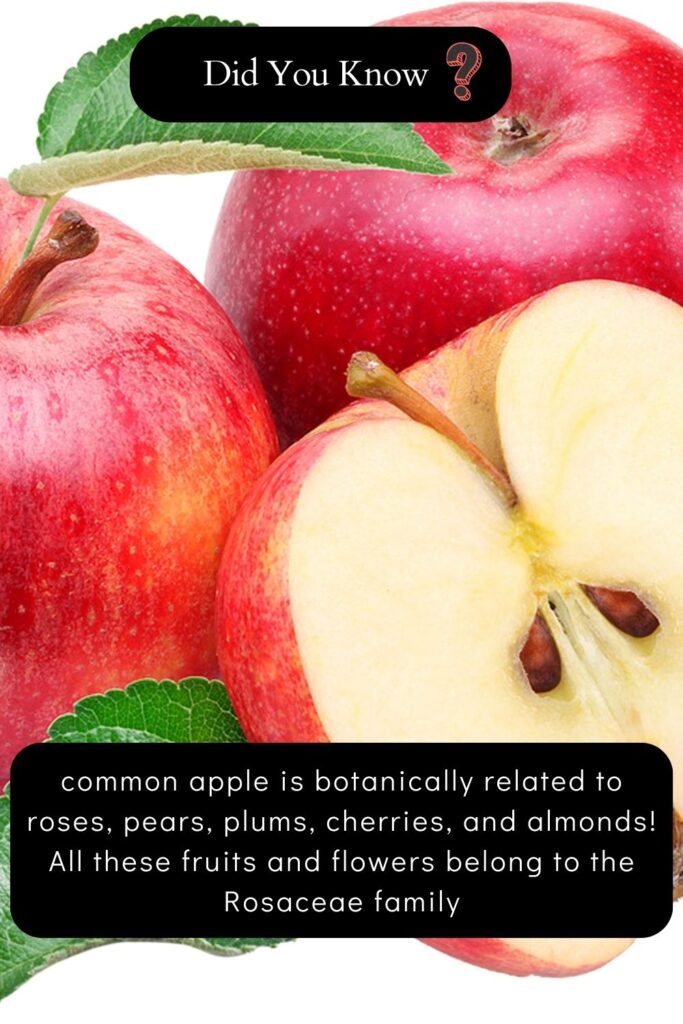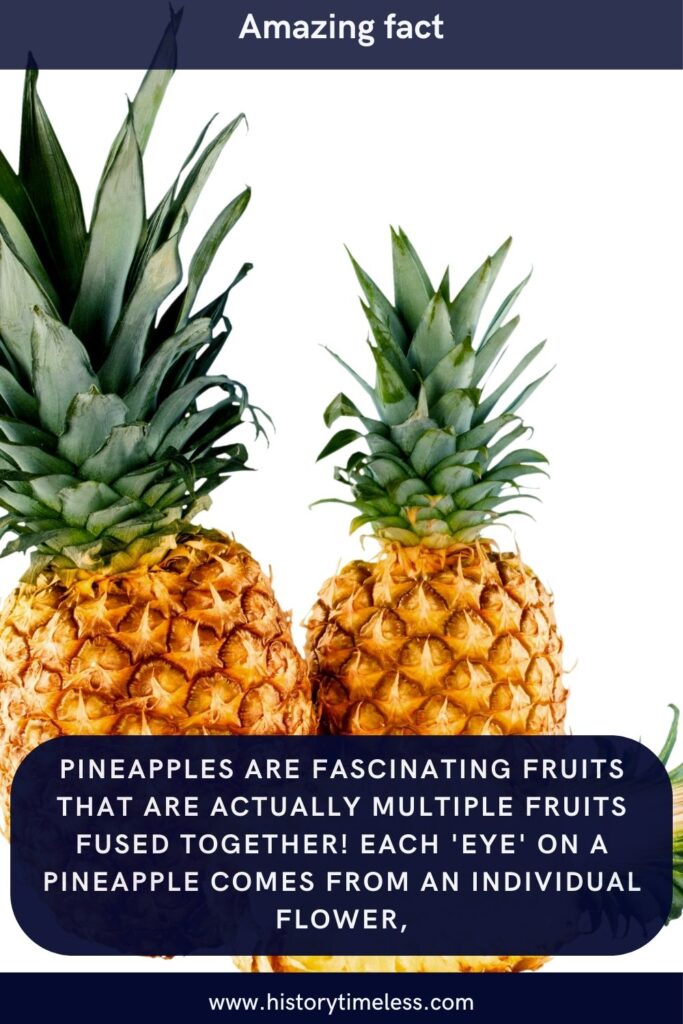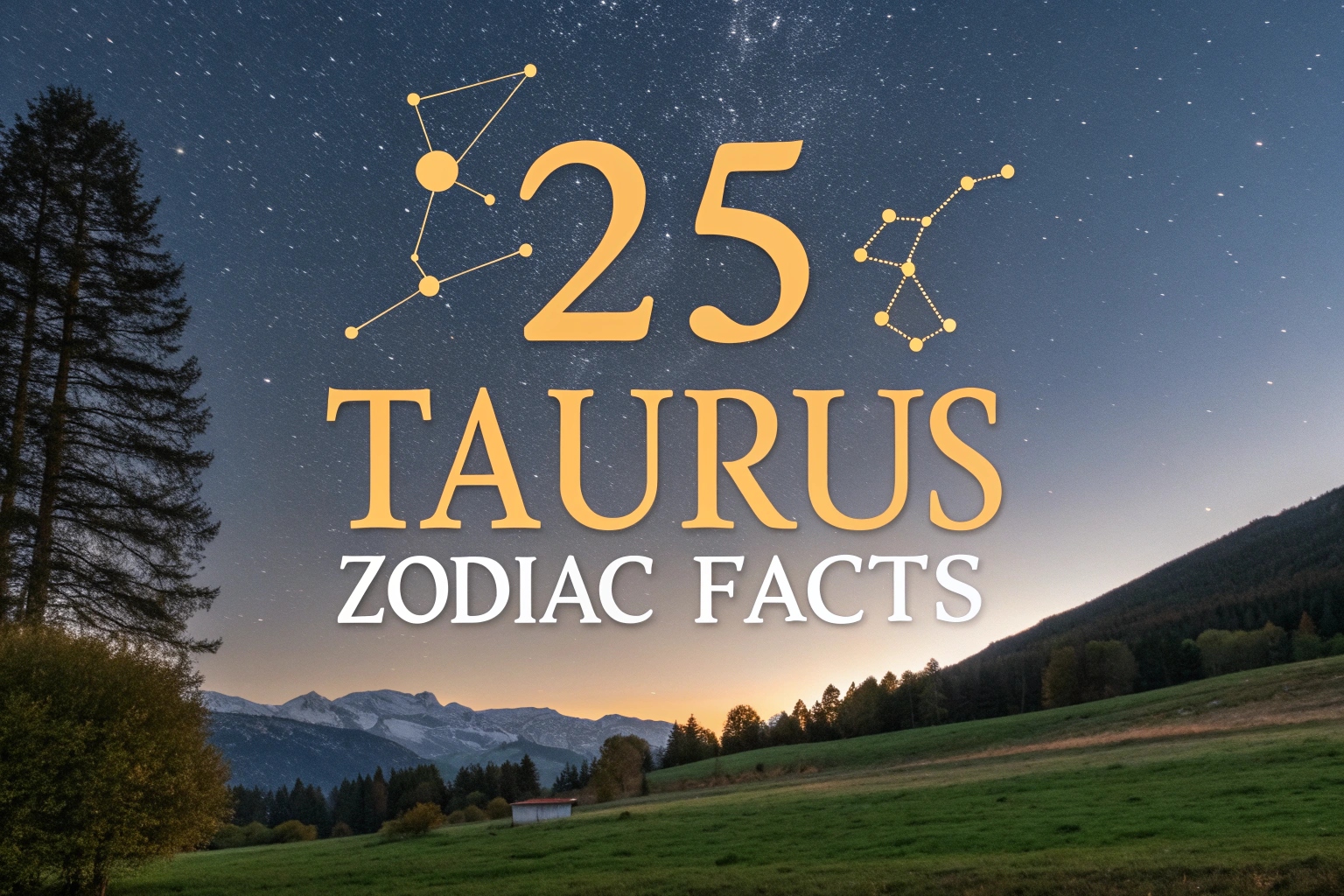Food is more than just fuel—it’s culture, comfort, creativity, and connection. From ancient traditions to modern trends, what we eat tells a story about who we are and how we live.
Whether you’re a passionate foodie, a curious cook, or someone who just loves a good snack, there’s always something new to discover in the world of food.
These 26 facts about food will take you on a tasty journey through surprising ingredients, quirky history, and fun culinary trivia that might just change the way you look at your next meal. Dig in!
1. Spices Were Once More Valuable Than Gold
For centuries, spices like nutmeg, cloves, and pepper were incredibly rare and highly sought after, especially in Europe. During the Middle Ages and Renaissance, these aromatic treasures from the East were worth more than their weight in gold!
They weren’t just used for flavoring food; spices were symbols of wealth, power, and prestige. Wars were fought, trade routes were established, and explorations were launched all in the pursuit of these precious seasonings, fundamentally shaping global history and culinary traditions.
2. Honey Is One of the Few Foods That Never Spoils
Honey’s remarkable longevity is due to its low water content and high acidity, along with the presence of hydrogen peroxide, which acts as an antibacterial agent.
Archaeologists have discovered pots of honey in ancient Egyptian tombs that are thousands of years old and still perfectly edible! While honey might crystallize over time, this is a natural process and doesn’t mean it has spoiled.
You can easily return crystallized honey to its liquid state by gently warming it. This natural preservation makes honey a truly unique and timeless food.
3. Chocolate Was Once Used as Currency
In ancient Mesoamerica, particularly by the Mayans and Aztecs, cacao beans, the raw ingredient for chocolate, were highly prized and used as currency.
These beans were so valuable that they were used to pay taxes and trade for goods. Chocolate wasn’t consumed as a sweet treat as we know it today; it was a bitter, frothy drink often flavored with spices and chili peppers.
This historical use highlights the immense cultural and economic significance of chocolate long before it became a global confectionery favorite.
4. Apples Belong to the Rose Family of Plants
Believe it or not, the crisp and common apple is botanically related to roses, pears, plums, cherries, and almonds! All these fruits and flowers belong to the Rosaceae family.

This relationship becomes evident when you look at the apple blossom, which closely resembles a rose flower.
Even the core of an apple, with its star-shaped seed arrangement, shares similarities with the floral structure of other rose family members. This unexpected connection reveals the interconnectedness within the plant kingdom.
5. The Average Strawberry Has Around 200 Seeds
Unlike most fruits where seeds are found inside, strawberries are unique because their seeds are on the outside! Those tiny little specks you see on the surface of a strawberry are actually the achenes, which are botanical terms for the fruit’s seeds.
Each strawberry can have approximately 200 of these seeds, sometimes even more. Interestingly, the fleshy red part of the strawberry that we eat isn’t technically a fruit in botanical terms, but rather the enlarged receptacle of the flower.
6. Bananas Are Berries, But Strawberries Are Not
Botanically speaking, the classification of fruits can be surprising. While we commonly call strawberries ‘berries’, they don’t meet the botanical definition.
True berries, like bananas, grapes, and even tomatoes, develop from a single ovary of a flower and have seeds inside the fleshy part. Strawberries, on the other hand, develop from a flower with multiple ovaries.
This is a fun example of how scientific classifications can differ from everyday culinary terms, highlighting the fascinating nuances in the plant world.
7. Peanuts Are Not Nuts, They Are Legumes
Despite being called peanuts and often grouped with tree nuts, peanuts are actually legumes, making them closer relatives to beans and peas. Legumes grow in pods underground, while true nuts like almonds and walnuts grow on trees.
This distinction explains why peanuts have different nutritional profiles compared to tree nuts; they are generally higher in folate and certain amino acids, characteristic of legumes. Understanding this difference is crucial for people with nut allergies, as peanut allergies are distinct from tree nut allergies.
8. Carrots Were Originally Purple, Not Orange
The vibrant orange carrots we commonly see today are a relatively recent development. Historically, carrots were primarily purple, yellow, white, and even black. Orange carrots were popularized in the 17th century in the Netherlands, believed to be cultivated as a patriotic symbol by Dutch growers in support of the House of Orange.
Over time, orange carrots became dominant due to their sweetness and higher levels of beta-carotene, overshadowing their colorful predecessors, which still exist but are less frequently found in mainstream markets.
9. Coffee Beans Are Actually Seeds, Not Beans
Despite their name, coffee beans are not actually beans. They are the seeds of coffee cherries, which are the fruit of the coffee plant. The term ‘bean’ likely stuck due to their resemblance to true beans in shape and appearance before roasting.
After harvesting, the coffee cherries are processed to remove the outer layers, leaving behind the green seeds, which are then roasted to develop the characteristic flavors and aromas we associate with coffee. So, next time you enjoy a cup of coffee, remember you’re savoring the roasted seeds of a fruit!
10. Broccoli Is a Man-Made Vegetable
Broccoli, along with cauliflower, cabbage, kale, and Brussels sprouts, is derived from wild mustard plants through selective breeding over centuries. Ancient Romans are credited with cultivating broccoli into the vegetable we know today.
These vegetables are all part of the Brassica oleracea species, showcasing how human intervention and agricultural practices have dramatically shaped the food we eat, transforming a single wild plant into a diverse range of nutritious and flavorful vegetables.
11. Cranberries Bounce Because They Have Air Pockets
Fresh cranberries have a unique characteristic – they bounce! This is because they contain tiny pockets of air inside their flesh. Commercial cranberry growers use this bouncing ability to their advantage during harvesting.
Cranberries are bounced on conveyor belts to separate the ripe, firm berries from the soft or rotten ones. This bouncy test is a simple yet effective way to ensure quality and freshness, contributing to the high standards of cranberry products we find in stores.
12. Wasabi That Most People Eat Is Often Horseradish
Authentic wasabi, the pungent green paste served with sushi, is quite expensive and difficult to cultivate. As a result, much of the “wasabi” served in restaurants, especially outside of Japan, is actually horseradish paste colored green with food coloring.
True wasabi has a more complex and nuanced flavor than horseradish, with a clean, fresh heat that doesn’t linger as long.
If you want to experience real wasabi, look for restaurants that explicitly advertise “real wasabi” or purchase fresh wasabi rhizomes to grate at home.
13. The White Stuff on Chocolate Is Not Mold
Have you ever noticed a white coating sometimes appearing on chocolate? This is often mistaken for mold, but it’s actually “chocolate bloom.”
There are two types of bloom: fat bloom and sugar bloom. Fat bloom occurs when the cocoa butter separates and rises to the surface, while sugar bloom happens when sugar recrystallizes due to moisture.
Both types of bloom are harmless and don’t affect the taste or safety of the chocolate, although they might alter its texture and appearance slightly.
14. Popcorn Is a Type of Corn That Explodes
Popcorn is a specific type of corn kernel that has a hard, moisture-sealed hull and a dense starchy interior. When heated, the moisture inside the kernel turns into steam, building pressure.
Once the pressure reaches a critical point, the hull ruptures, and the starch inside expands rapidly, creating the fluffy, familiar popcorn texture.
Not all types of corn will pop; popcorn kernels are specially bred for this explosive transformation, making it a unique and fun snack.
15. Cashews Grow on Trees with a Toxic Shell
Cashews are unique nuts because they grow attached to a cashew apple, a pear-shaped false fruit. What’s even more interesting is that the cashew shell contains a toxic resin called urushiol, the same irritant found in poison ivy.
This is why cashews are always sold shelled and roasted. The roasting process neutralizes the urushiol, making them safe to eat. Raw cashews as you might imagine them directly from the tree are not safe for consumption due to this toxic shell.
16. Pineapples Are Berries Growing From Multiple Flowers
Pineapples are fascinating fruits that are actually multiple fruits fused together! Each ‘eye’ on a pineapple comes from an individual flower, and these flowers fuse together to form the composite fruit.

This makes the pineapple a type of multiple fruit, technically a sorosus. It takes about two to three years for a pineapple plant to mature and produce a single pineapple, making each one a labor of time and nature’s intricate process.
17. Avocados Are Fruits, Not Vegetables, and Technically Berries
Often used in savory dishes and salads, avocados are botanically classified as fruits, and more specifically, as single-seeded berries.
Their creamy texture and mild flavor often lead people to categorize them as vegetables, but their origin from a flowering plant and their single large seed firmly place them in the fruit category.
Avocados are also incredibly nutritious and rich in healthy fats, making them a unique and beneficial addition to our diets.
18. The Hottest Chili Pepper Can Cause Physical Harm
The Carolina Reaper currently holds the Guinness World Record for the hottest chili pepper. Its Scoville Heat Units (SHU), a measure of spiciness, can exceed 2 million!
Consuming extremely hot chili peppers like the Carolina Reaper can lead to severe pain, nausea, vomiting, and even burns to the mouth and throat.
While chili peppers offer health benefits in moderation, extreme heat can be dangerous and should be approached with extreme caution.
19. Food Can Taste Different in Space
Astronauts often report that food tastes bland in space. This is partly due to the microgravity environment, which causes fluids to shift upwards in the body, leading to nasal congestion and affecting the sense of smell. Since smell is crucial for taste perception, food can seem less flavorful in space.
To combat this, space food is often prepared with stronger flavors and spices to make it more palatable for astronauts during long-duration missions.
20. Chewing Gum Can Actually Improve Concentration
While often discouraged in classrooms, chewing gum can surprisingly have some cognitive benefits. Studies have shown that chewing gum can improve concentration, memory, and reaction time for some people.
The act of chewing increases blood flow to the brain, which may enhance cognitive function. However, the effects are generally short-lived, and excessive gum chewing can have other drawbacks, like jaw muscle fatigue.
21. The Color of Food Can Significantly Affect Our Perception of Taste
Our sense of taste is heavily influenced by visual cues, especially color. Food manufacturers and marketers understand this well and use color to influence our expectations and perceptions of flavor.
For example, studies have shown that people perceive orange-colored drinks as tasting more like orange than drinks that are the same flavor but colored differently. Color plays a significant role in our overall eating experience, often before we even take a bite.
22. Food Allergies Are Often Developed in Childhood
While food allergies can develop at any age, they are most commonly developed in childhood. The most common food allergens in children include milk, eggs, peanuts, tree nuts, soy, wheat, fish, and shellfish.
Fortunately, some childhood allergies, like milk and egg allergies, can be outgrown over time. Food allergies occur when the immune system mistakenly identifies a food protein as harmful, triggering an allergic reaction, which can range from mild to life-threatening.
23. Eating Spicy Food Can Release Endorphins
That burning sensation you get from eating spicy food actually triggers the release of endorphins, the body’s natural painkillers and mood elevators.
Capsaicin, the compound responsible for the heat in chili peppers, stimulates pain receptors, which in turn prompts the brain to release endorphins.
This endorphin release can create a feeling of euphoria and well-being, which is why some people become addicted to the “spice rush” and enjoy eating very hot foods.
24. The Most Wasted Food Globally Is Fruit and Vegetables
Globally, a significant portion of food waste comes from fruits and vegetables. These perishable items are often discarded due to cosmetic imperfections, overproduction, or spoilage during transportation and storage.
Reducing food waste, especially of fruits and vegetables, is crucial for environmental sustainability and food security.
Simple steps like planning meals, properly storing produce, and using leftovers can make a big difference in minimizing food waste at home.
25. Cooking Food Makes It Easier to Digest and Extract Nutrients
Cooking food, a practice that distinguishes humans from other animals, significantly improves digestibility and nutrient absorption.
Heat breaks down complex carbohydrates, proteins, and fats, making them easier for our digestive system to process. Cooking also kills harmful bacteria and pathogens, making food safer to eat.
This improved efficiency in nutrient extraction from cooked food has played a crucial role in human evolution and development.
26. The Average Person Eats About 35 Tons of Food in a Lifetime
Over an average lifetime, a person consumes an astounding amount of food, estimated to be around 35 tons! This massive quantity underscores the central role food plays in our lives, providing energy, nutrients, and sustenance throughout our existence.
Thinking about this vast amount of food consumed highlights the importance of making informed and healthy food choices to nourish our bodies and support our well-being over the long term.
Peruse more engaging information:
27 Wild Facts About Eagles You Won’t Believe Are Real
25 Taurus Zodiac Facts That’ll Explain So Much About Them!
20+ Insane Facts About Animals That Defy Belief!
15+ Interesting World Facts: Say ‘Wow’ to These Discoveries!





